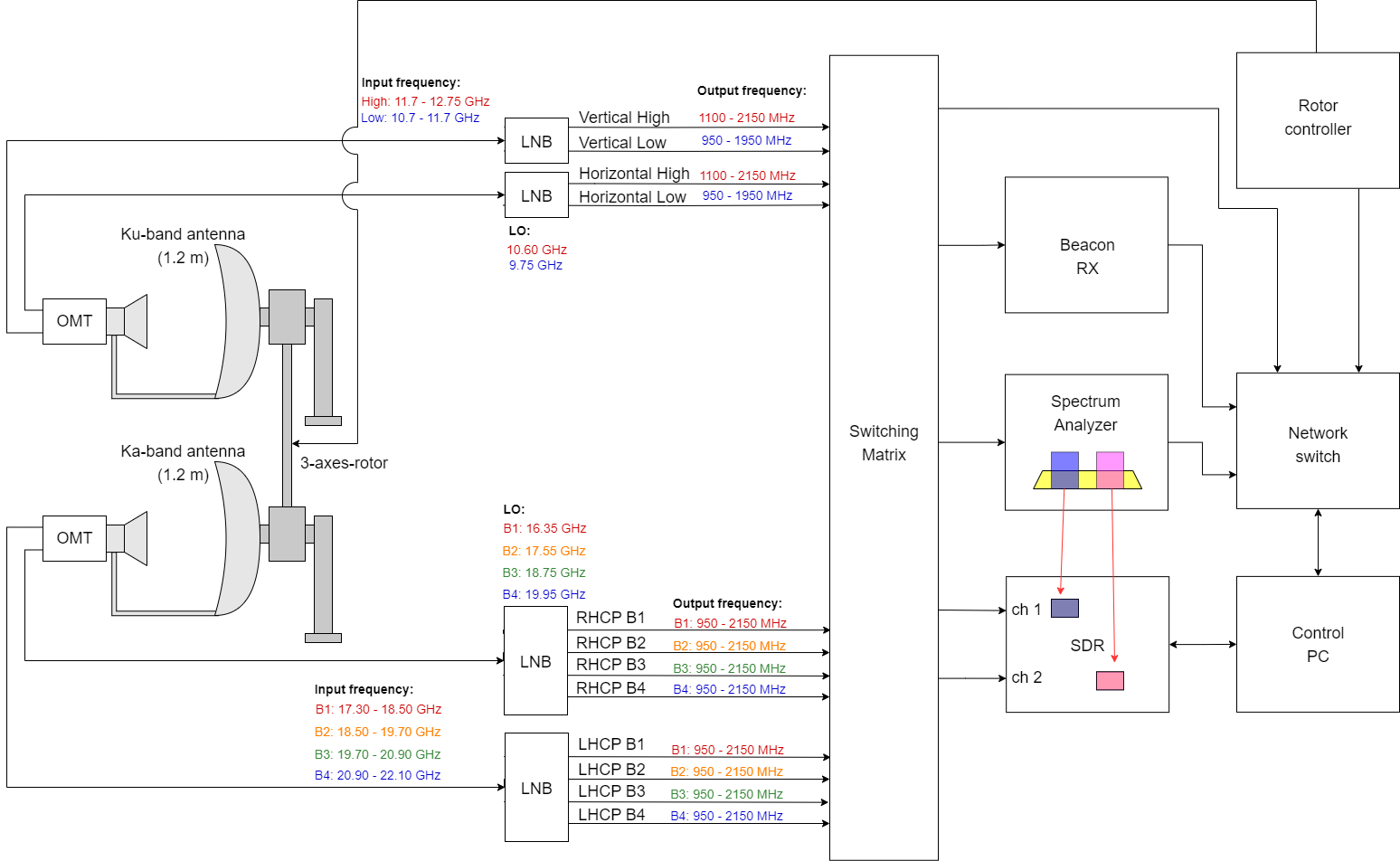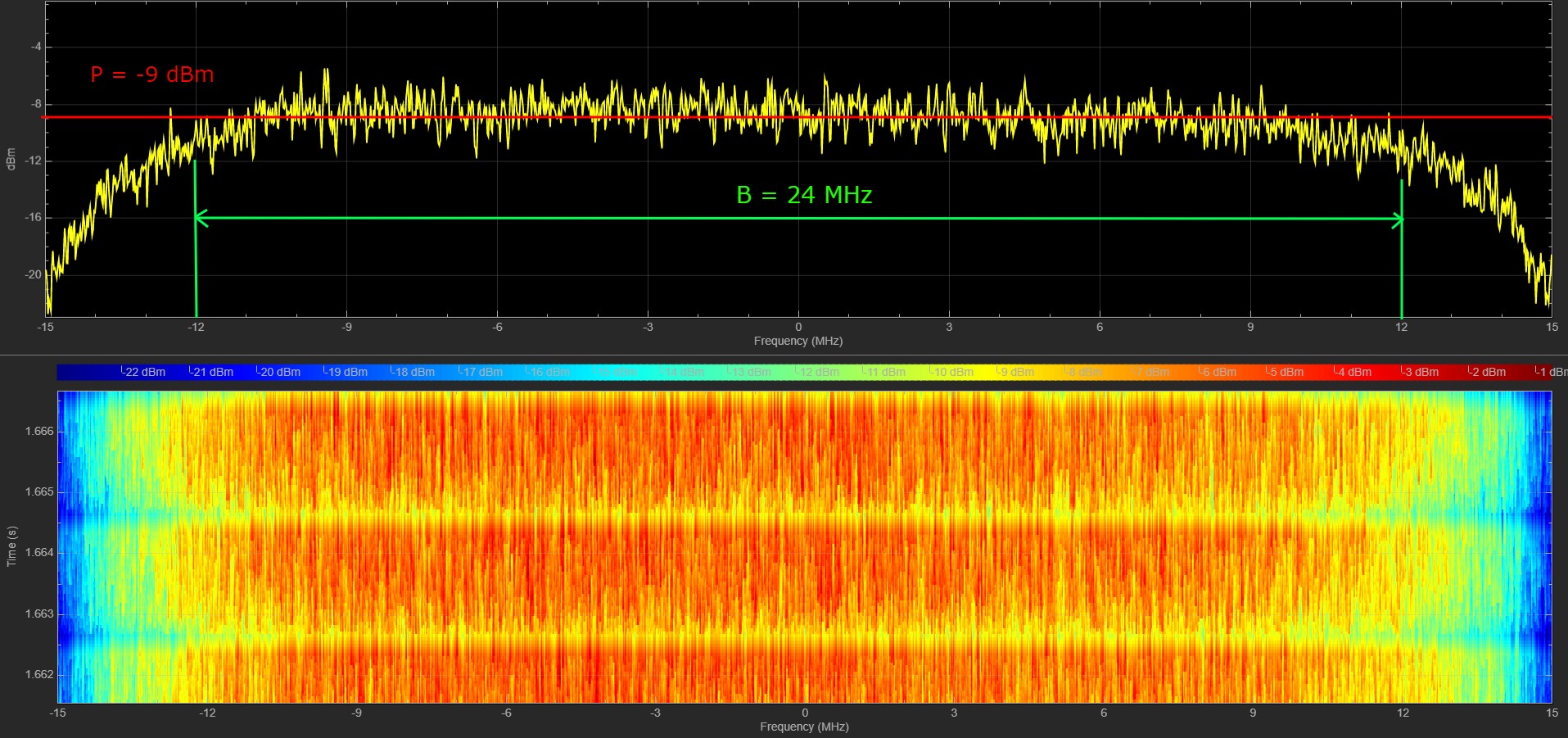¶ NTN Spectrum Sensing

¶ Description
The exponential growth of non-geostationary orbit (NGSO) satellite systems in recent years has ushered in an era of unprecedented connectivity and communication capabilities. However, this rapid proliferation demands vigilance to ensure a harmonious coexistence of NGSO systems with the well-established geostationary (GEO) satellite networks.
To address this issue, this activity considers the development of a ground terminal able to identify and quantify sources of NGSO interference.
¶ Hardware and Software
The ground terminal comprises a system for measurement and characterization of the NGSO/GSO interference. The system considers two antenna dishes, one for Ku-band and one for Ka-band, mounted on a metallic structure whose orientation is controlled with a 3-axis rotor system. The input signal is downconverted by the Low Noise Blocks (LNBs) into several output bands. Each band can be directed to the following blocks via the Switching Matrix. The whole band can then be inspected by the Spectrum Analyzer, whereas the SDR can focus on specific areas.
When the signal is received from the satellite, it is reflected from the parabolic dish to the feed horn. The Orthomode transducer (OMT) separates the two orthogonally polarized microwave signals. The signals are then sent to the LNB, where it is downconverted and further processed.
¶ Experiment
In this experiment, we demonstrate how a setup similar can be used to receive a GEO signal in the same frequency range as Starlink. We use a 1.2m dish pointing towards satellites ASTRA 2E, 2F and 2G. These satellites are part of the Astra 2 series operated by SES and they are primarily used to provide direct-to-home (DTH) television broadcasting and other communication services across Europe and neighboring regions.
The setup is shown below, with the antenna pointed at satellites ASTRA 2E, 2F, and 2G.

¶ Results
First, the spectrum analyzer detects fifteen carriers from 11.025 to 11.625 GHz with GHz as the center frequency. As shown below, the first carrier is located at 11.023 GHz and the last one is located at 11.582 GHz.

Then, the SDR captures a narrower spectrum segment, ranging from 11.309 to 11.341 GHz, enabling a more thorough examination of the two carriers. We may, for example, go to a carrier at 11.386 GHz and obtain the bandwidth and average power. The carrier at 11.386 GHz has a bandwidth of 24 MHz and an average power of -9 dBm.

In this way, the spectrum analyzer can be used to examine a broader frequency range, whereas the SDR can focus on specific frequency segments and provide refined analysis of the spectrum. This is a similar set-up as we plan to have for the final NGSO-Sense prototype.